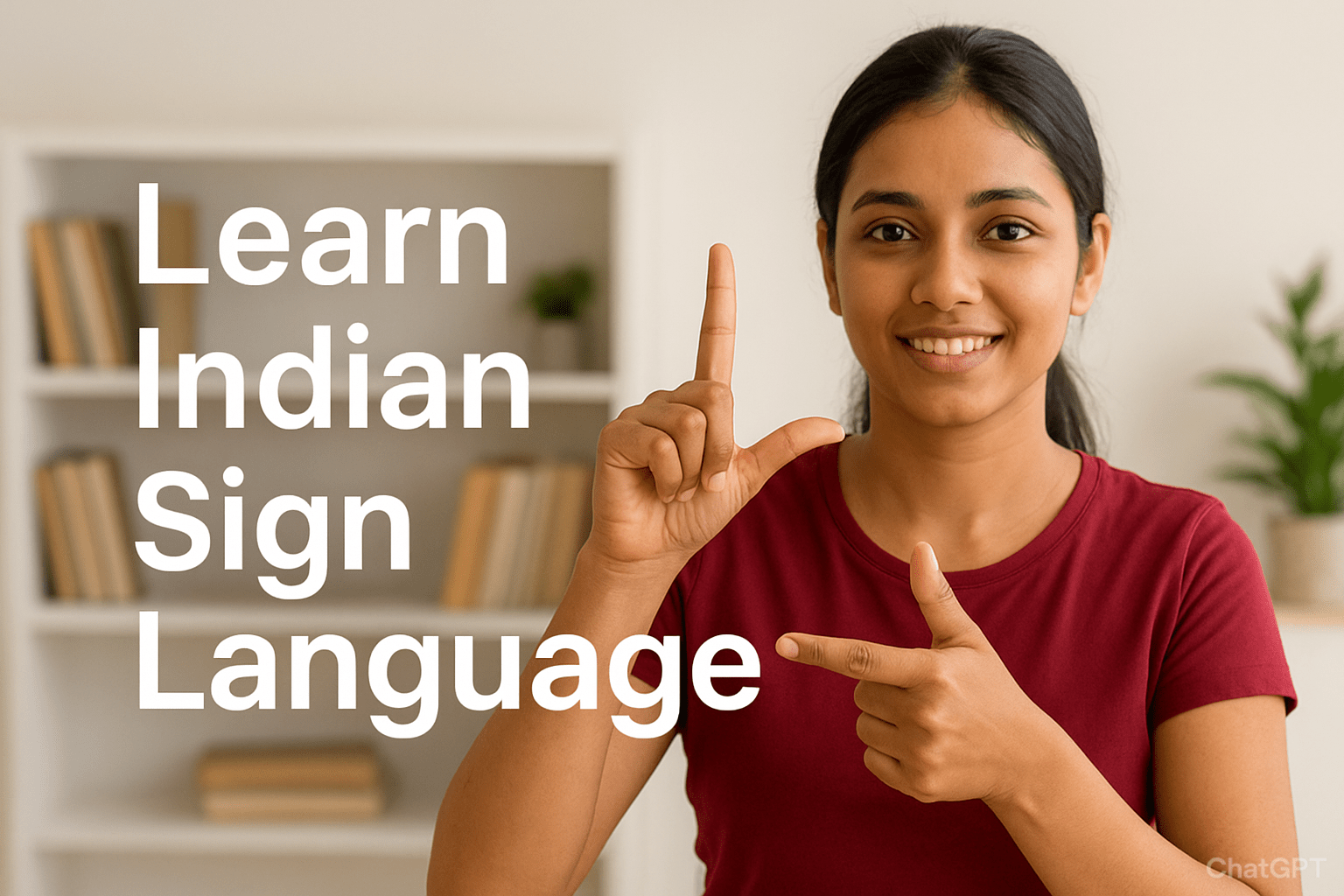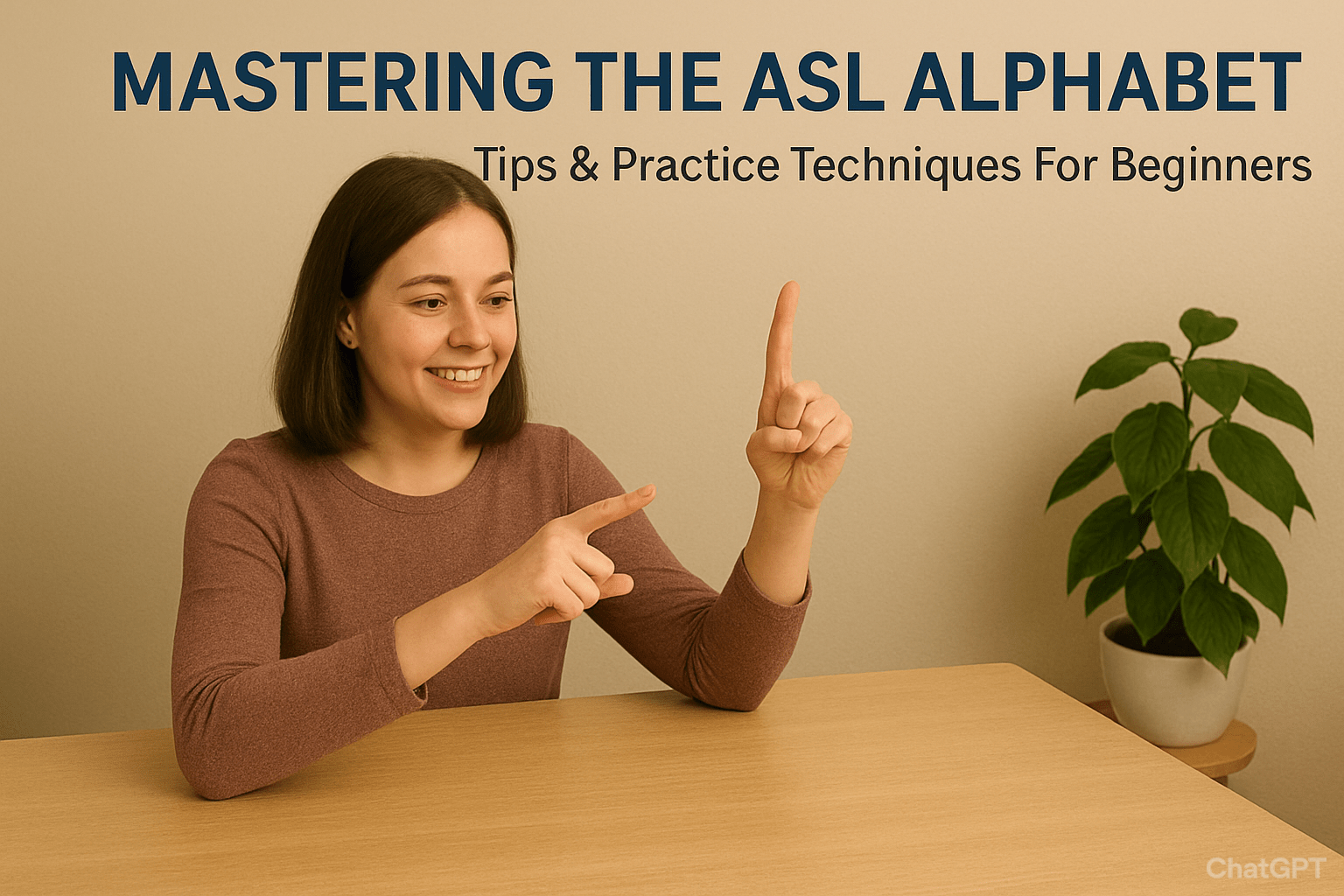Learning sign language is more than memorizing words — it’s about connection. Once you know a few conversational sign phrases, you can start communicating meaningfully right away. Whether you’re greeting a Deaf friend, introducing yourself, or simply saying “thank you,” these everyday signs open doors to real interaction and understanding.
In this guide, we’ll go through essential sign language conversational phrases, tips to remember them, and how to practice confidently using free video lessons on SignAcademy.org.
👋 1. Greetings and Introductions
The best way to start any conversation is with a smile and a simple “hello.”
Here are a few key signs to begin your interaction:
- Hello / Hi – A friendly wave from your temple outward.
- Good morning / Good evening – Combine “good” with a rising or setting sun motion.
- My name is… – Sign “my” (palm on chest), then fingerspell your name using the ASL Alphabet.
- Nice to meet you – Bring your hands together in a gentle handshake-like motion.
💡 Tip: Practice introductions daily in front of a mirror. Watch your expressions — in sign language, your face is part of your grammar!
💬 2. Everyday Conversational Phrases
Once introductions are done, here are some everyday conversational sign phrases to keep the dialogue going:
- How are you? – Move both hands outward slightly from your chest with a questioning expression.
- I’m fine / I’m good – One hand moves from your chin outward in a smooth motion.
- Thank you / You’re welcome – Both share the same graceful motion from chin to outward.
- Sorry / Excuse me – Use a circular motion over your chest with a gentle facial expression.
👉 Explore a complete set of everyday sign vocabulary in this article for smoother small talk and daily interactions.
❓ 3. Asking Questions
Asking and answering questions is the heart of conversation. In sign language, your eyebrows and head movement indicate the type of question.
Here are some essentials:
- Who? – Wiggle your index finger near your chin.
- What? – Palms up, shrug slightly with questioning eyebrows.
- Where? – Point your index finger and move it side to side.
- When? – Draw a small circle near your other index finger.
- Why? – Touch your forehead and move your hand outward into a “Y” handshape.
💡 Tip: When asking a “yes/no” question, raise your eyebrows slightly. For open-ended ones (“who,” “what,” “where”), lower them a bit.
👫 4. Polite and Social Phrases
Good manners go a long way in every language — including sign language!
Here are some helpful social expressions:
- Please – Rub your chest with a flat hand.
- Thank you – From chin to outward.
- Nice to meet you – Combine “nice,” “meet,” and “you.”
- Goodbye – A friendly wave or hand flick.
- Take care – Cross your “K” hands and move them gently forward.
🌱 Using these polite signs helps you build rapport and shows respect for Deaf culture.
💡 5. Useful Everyday Expressions
Here are a few practical conversational sign phrases you’ll use often:
- I don’t understand – Shake your head slightly while signing “understand.”
- Can you help me? – “Help” is shown by placing your thumb-up hand on your other palm and moving it forward.
- Where’s the bathroom? – Use the sign “T” (like a thumb between index and middle finger) while twisting slightly.
- I’m learning sign language – Sign “learn” by miming taking something from a book into your head, then “sign” with circular motions of your hands.
- Slow down, please – Flatten one hand and gently brush over it with the other, meaning “slow.”
🎥 6. Practicing with Video Lessons
Sign language is visual — which means sign language video lessons are your best friend. Watching native signers in motion helps you grasp rhythm, flow, and expression better than static images ever could.
Here’s how to make the most of video learning:
- Pause and replay often. Watch the same sign several times.
- Mimic the signer’s pace and facial expressions.
- Record yourself signing to spot what needs adjustment.
- Use trusted sources like SignAcademy’s curated sign videos, where you’ll find accurate, region-specific demonstrations in both Indian Sign Language (ISL) and American Sign Language (ASL).
🤝 7. How to Practice in Real Conversations
You don’t need to wait until you’re fluent to start signing! In fact, using what you know early builds confidence.
Try these ideas:
- Greet your friends using “Hi” and “How are you?”
- Join online Deaf community chats or meetups.
- Watch Deaf vloggers to see how conversational flow really works.
- Sign along with music or stories to improve expression.
Even a few conversational signs can turn into a real dialogue when done sincerely.
❤️ Final Thoughts
Learning conversational sign phrases is one of the most rewarding parts of your sign language journey. These phrases let you start real conversations, show respect, and connect meaningfully — even if you’re still learning the basics.
So, next time you meet someone who signs, don’t hesitate — say hello with your hands!
For structured learning and reliable video examples, explore the Sign Academy Blog and start building your signing confidence today.


